#astronomy in the quran
Explore tagged Tumblr posts
Text
The Quran, the holy book of Islam, is revered by Muslims as the word of God. It is not only a religious text but also contains numerous scientific references that have been seen by many as miracles. These scientific miracles are believed to be evidence of the divine nature of the Quran and its ability to provide knowledge that was ahead of its time. Here are some examples of scientific miracles found in the Quran:
Embryology: The Quran contains detailed descriptions of human embryonic development, which were not known at the time it was revealed. It accurately describes stages such as fertilization, implantation, and formation of bones and muscles.
Creation from Water: The Quran mentions that all living things are created from water, which aligns with modern scientific understanding that water is essential for life.
Mountains as Stabilizers: The Quran refers to mountains as stabilizers on Earth's surface, preventing it from shaking or swaying excessively. This concept correlates with modern geological understanding that mountains play a crucial role in maintaining tectonic stability.
Celestial Orbits: The Quran mentions the movement and orbiting of celestial bodies like the sun and moon. This aligns with our current knowledge about their orbital paths around other celestial objects.
Oceanography: The Quran describes the distinct properties of saltwater and freshwater and states that they do not mix completely when they meet - something that was only discovered much later through advancements in oceanographic research.
These examples highlight some instances where scientific information mentioned in the Quran has been seen by many as miraculous due to its alignment with modern scientific discoveries.
#miracles of the quran#scientific miracles in the quran#quranic verses#verses of the quran#holy quran#islam#qur'anic verse#quran#scientific accuracy of the quran#quran and modern science#miracles in the quran#scientific facts in the quran#quran and scientific discoveries#quran and embryology#astronomy in the quran#geology in the quran#biology in the quran#physics in the quran#miracles of creation in the quran#Spotify
5 notes
·
View notes
Text
Numerology: The number 9
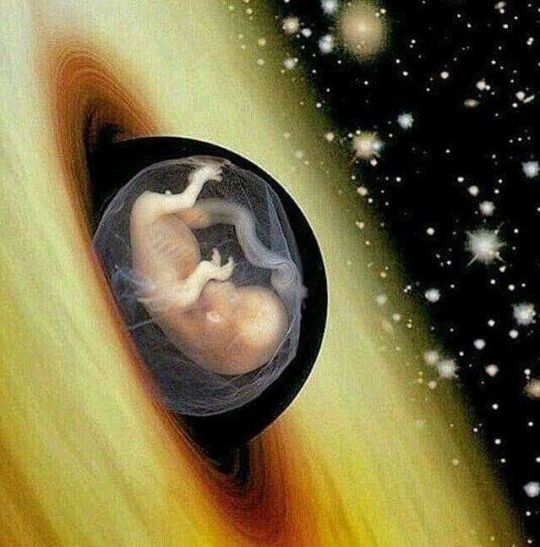
9 18 27 36 45 54 63 72 81 90 99
What does the number 9 signify? 9 means completion, but not a final ending.
In astrology: the number 9 is associated with the planet Mars, which is said to govern ambition, energy, and action. People born under the sign of Mars, which is associated with the number 9, are said to be confident, independent, and adventurous. The ninth sign of the zodiac, Sagittarius, is known for its adventurous and expansive spirit, which reflects the qualities of the number 9. Additionally, the number 9 is linked to the concept of karma, which refers to the idea that our actions have consequences that come back to us. This is because 9 is the result of adding up all the single-digit numbers before it (1+2+3+4+5+6+7+8=36, and 3+6=9), suggesting that we reap what we sow. Overall, the number 9 is significant and powerful in astrology, representing completion, growth, and the consequences of our actions. Moreover, in Vedic astrology, the nine planets or Grahas are believed to have a significant influence on human destiny and are associated with different qualities and energies. These planets include the Sun, Moon, Mercury, Venus, Mars, Jupiter, Saturn, Rahu, and Ketu. The Sun and Moon are considered the most important planets, as they are responsible for life on Earth and are associated with the soul and mind, respectively. The number 9 is associated with the planet Guru or Jupiter, which is considered the most benefic planet in the horoscope. Guru is associated with wisdom, knowledge, and good fortune. People who are born on the 9th, 18th, or 27th of any month are said to be influenced by the planet Guru and are considered to be blessed with good luck and prosperity.
In astronomy: the number 9 is perhaps most famously associated with the nine planets in our solar system. the number 9 has significance in the relationship between the Sun, Moon, and Earth. It is said that the Sun completes a cycle of 360 degrees in the sky in one year, which is divided into 12 zodiac signs, with each sign taking up 30 degrees. The Moon, on the other hand, takes about 29.5 days to complete its cycle around the Earth, and during this time, it passes through all 12 zodiac signs. Interestingly, the total number of days in a solar year (365.24) multiplied by the number of lunar months in a year (12.37) equals 4536.24, which can be reduced to 9. This is known as the lunar-solar cycle, and it is believed to be a powerful symbol of completion and transformation.
In mythology: the number 9 is often associated with spiritual growth and knowledge. For example, in Norse mythology, Odin hung from the world tree Yggdrasil for nine days and nine nights to gain wisdom and knowledge. In Greek mythology, nine muses inspired creativity and art, while in Egyptian mythology, nine gods presided over the underworld.
In mathematics: the number 9 has some unique properties as well. It is the highest single-digit number, and any number multiplied by 9 will always result in a number whose digits add up to 9. Additionally, the number 9 is the sum of the first three square numbers (1² + 2² + 3² = 9) and the sum of the first three cube numbers (1³ + 2³ + 3³ = 36). This property of the number 9 is known as the "digital root" and is used in various mathematical and divinatory practices.
In physics: the number 9 appears in the fundamental equations that describe the behavior of the universe, such as the nine-dimensional equations of string theory. In mathematics, the number 9 is used in a variety of numerical systems, including the base-9 system used by the ancient Maya.
In science: the significance of number 9 in science is reflected in its frequent appearance in various scientific phenomena. For instance, the periodic table has nine fundamental types of atoms, known as lanthanides. The human body is made up of nine major organ systems, including the cardiovascular, nervous, and respiratory systems. The electromagnetic spectrum has nine main categories of waves, ranging from radio waves to gamma rays. Sun and Earth: The diameter of the Sun is supposed to be 108 times the diameter of the Earth. The distance from the Sun to the Earth is 108 times the diameter of the Sun. It looks very dramatic and mysterious yet if true its indeed happy mystery. Moon and Earth: The average distance of the Moon from the Earth is 108 times the diameter of the Moon. Furthermore, there are nine planets in our solar system (including Pluto, which is now considered a dwarf planet), and the number 9 also appears in the fundamental equations that describe the behavior of the universe, such as the nine-dimensional equations of string theory. The number 9 also appears in the concept of tides, which are caused by the gravitational pull of the moon and sun on the Earth's oceans. Tides follow a roughly 12-hour cycle, with high and low tides occurring twice a day, resulting in a total of around 9 tides per day.
In ancient Egypt: the number 9 was associated with the nine gods who ruled over the underworld.
In music: the significance of the number 9 in music is rooted in its harmonic properties. The ninth note of a scale, known as the subtonic, is a crucial note for creating tension and leading to the tonic note. This creates a sense of resolution and closure in musical phrases. Additionally, the number 9 appears in musical time signatures such as 9/8, which adds a unique and complex rhythmic texture to the music. The number 9 also plays a symbolic role in music, as seen in The Beatles' "Revolution 9," a groundbreaking experimental track that features various sound effects and spoken word samples. Overall, the number 9 adds depth and complexity to the music, both in its harmonic properties and its symbolic significance.
Nine Muses: In Greek mythology, the Nine Muses were the goddesses of inspiration in the arts and sciences, such as music, poetry, and astronomy. They were said to be the daughters of Zeus and Mnemosyne and were believed to provide inspiration and guidance to human beings.
Nine Worthies: The Nine Worthies were a group of historical and legendary figures from different cultures who were seen as exemplars of chivalry and virtue. They were divided into three categories of three: pagan, Jewish, and Christian. The pagan worthies were Hector, Alexander the Great, and Julius Caesar; the Jewish worthies were Joshua, David, and Judas Maccabeus; and the Christian worthies were King Arthur, Charlemagne, and Godfrey of Bouillon.
Ennead: In ancient Egyptian mythology, the Ennead was a group of nine gods and goddesses who were worshipped in the city of Heliopolis. The Ennead included the god Atum, who was believed to have created the world, and his children Shu and Tefnut, who represented air and moisture, respectively.
Nine Emperor Gods Festival: The Nine Emperor Gods Festival is a Taoist festival celebrated in Southeast Asia, particularly in Thailand, Malaysia, and Singapore. The festival is held in the ninth lunar month and is dedicated to the worship of the Nine Emperor Gods, who are believed to bring good luck and prosperity.
The 9th letter of the alphabet is "I", which is also the Roman numeral for the number 1. This means that "IX" is 9 in Roman numerals, which is why you sometimes see clocks or watches with "IX" instead of "IX" to represent 9.
Islam: Quran says that each and everything of this universe is counted and surrounded by numeric. The 9th chapter of the Qur'an At-Tawbah 'the Repentance', and is one of the last Medinan surahs. The number 9 is the day of Hajj. The Messenger Mohammad participated in 9 of the conquests. And nine Qur’anic verses speak about the prophet Moses. The Arabic letters of the opening in the Qur’an add up to 786=9, 786 is an Arabic numeric value that denotes“Bismillah al-Rahman al-Rahim” the opening phrase of the Holy Quran. It translates as “In the name of Allah, the Most Merciful, the Most Beneficent“. 786 is basically driven from the series of Arabic Numerology called “Abjad“. In Muslim tradition it is known to be the symbolic representation of Allah. But no Islamic scholar has so far been able to explain the origin of this number. In fact, it is not mentioned in the Quran. Ramadan: a time of fasting and spiritual reflection for Muslims, is the ninth month of the Islamic calendar.
Biblical Symbolism: The number nine is found 49 times in Scripture. Its biblical symbolism is tied mainly to the concepts of finality, divine completeness, and judgment. It typically surfaces during pivotal moments of transformation, culmination, or judgment in the biblical narrative. In the divine order of creation, the Lord chose to create a nine-month gestation period for human beings, indicating a time of completeness before birth. The number nine often marks the end of a divine cycle or period. In the context of the Old Testament, every ninth year represented the end of one cycle and the beginning of a new one. The number 'nine' also weaves a pattern of divine judgment throughout biblical history. For instance, the prophet Hosea, inspired by God, declared that Ephraim's destruction would come to the city in the 'ninth' year. In another instance, the ninth hour was marked for Christ's death, symbolizing the largest divine judgement humanity has ever witnessed. Ezekiel 24:1-2 noted the siege of Jerusalem commenced on the 'ninth' day of the tenth month. Adding to its significance, the city's destruction commenced on the 'ninth' day of the fourth month. Nine Attributes of God: The Lord is patient, The Lord is Merciful, The Lord is Gracious, The Lord is Abundant in Goodness, The Lord is Abundant in Truth, The Lord is Loving, The Lord is Forgiving, The Lord is a God that Judges, The Lord is Just. In Christianity, there are nine fruits of the Holy Spirit, including love, joy, peace, patience, kindness, goodness, faithfulness, gentleness, and self-control.
The number 9 is revered in Hinduism and considered a complete, perfected and divine number because it represents the end of a cycle in the decimal system, which originated from the Indian subcontinent as early as 3000 BC. The number 9 is considered a lucky number in many cultures, including in China and Japan, where it is associated with longevity and good fortune. In numerology, the number 9 is associated with spiritual growth, selflessness, and humanitarianism.
In Hinduism: The number 9 has played a significant role in Indian history, culture, and mythology. In Hinduism, there are nine planets, nine forms of Devi, and nine forms of Lord Vishnu. The number 9 is also associated with the Navratnas, which are the nine precious gemstones. According to Hindu mythology, there are nine avatars of Lord Vishnu, including Matsya, Kurma, Varaha, Narasimha, Vamana, Parashurama, Rama, Krishna, and Kalki. These avatars are believed to have appeared on Earth in different forms and at different times to restore balance and order. The number 9 is also significant in other Indian religions and traditions. In Buddhism: there are nine stages of consciousness. Some Buddhists carve have 108 small Buddhas on a walnut for good luck. Other Buddhists, like in Tibet and in Bhutan, they ring a bell 108 times to celebrate a new year. They believed it as corresponding to 108 virtues to cultivate and 108 defilements to avoid. Chinese Buddhists and in the Taoists 108 bead mala (called su-chu), and has three dividing beads, so the mala is divided into three parts of 36 each. Chinese astrology also believed that there are 108 sacred stars. while in Jainism, there are nine tattvas or principles of reality. The number 9 is also associated with the nine chakras, or energy centers, in the body. Nine Gems: The Navratnas, or nine gems, are considered to be powerful and auspicious in Indian culture. These include diamond, pearl, ruby, emerald, yellow sapphire, blue sapphire, hessonite, cat The significance of the number 9 can also be seen in Indian architecture and art. For instance, the famous Hindu temple, Brihadeeswarar Temple, located in Thanjavur, Tamil Nadu, was built in the 11th century and is known for its unique architecture that features nine stories, representing the nine planets in Hindu mythology. The temple also has nine entrances, nine corridors, and nine sacred tanks, emphasizing the importance of the number 9 in Hindu culture. Another example of the significance of the number 9 in Indian art is the Navarasas or the nine emotions, which are depicted in various forms of art, including dance, music, and theater. The nine emotions are Shringara (love), Hasya (laughter), Karuna (compassion), Raudra (anger), Veera (courage), Bhayanaka (fear), Bibhatsa (disgust), Adbhuta (wonder), and Shanta (peace). These emotions are believed to be the essence of human experience and are often portrayed in Indian art and literature. Furthermore, the number 9 is also believed to have healing properties in Ayurveda, the ancient Indian system of medicine. According to Ayurveda, the human body is composed of nine elements or dhatus, which are Rasa (plasma), Rakta (blood), Mamsa (muscle), Meda (fat), Asthi (bone), Majja (marrow), Shukra (semen), Artava (ovary), and Purisha (feces). These elements are believed to be interconnected and affect each other, and any imbalance in these elements can lead to illness. Ayurvedic remedies often involve balancing these elements to promote health and well-being.
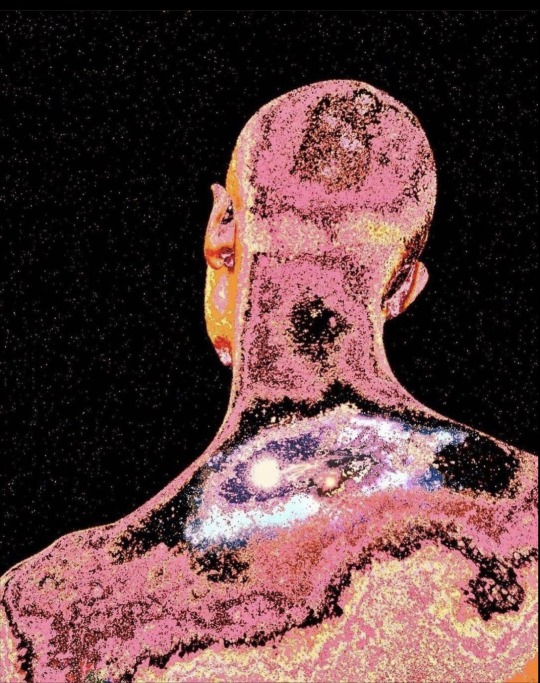
#numerology#vedic astrology#astrology#astronomy#science#greek mythology#hinduism#islam#christianity#bible#holy quran#literature#research#music#ancient egypt#physics#zodiac#zodic signs#astro notes#tarot#chakras#karma#buddhism#jewish#Destiny number#Destiny 9#9 life path#life path#life path 9
37 notes
·
View notes
Text
The Universe is expanding
Dr Alfred Kroner, Prof of Geology & the Chairman of the Deptt of Geology at the Institute of Geosciences, Johannes Gutenberg University, Mainz, Germany, said: “Thinking where Muhammad came from . . . I think it is almost impossible that he could have known about things like the common origin of the universe, because scientists have only found out within the last few years, with very complicated and advanced technological methods, that this is the case…… Somebody who did not know something about nuclear physics fourteen hundred years ago could not, I think, be in a position to find out from his own mind, for instance, that the earth and the heavens had the same origin….”
In 1924 a Swedish astronomer discovered that the universe is expanding. In June 2016 NASA and ESA scientists found that the universe is growing faster than thought earlier when Hubble Space Telescope provided some information in this matter.
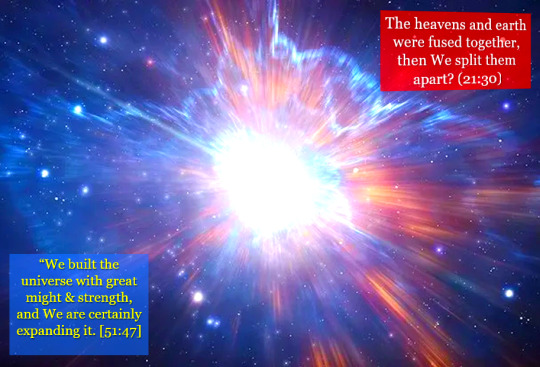

Base Image Source: Google
#astronomy#astrophysics#nasa#universe#quran#islam#allahﷻ#prophet muhammad#physics#geology#nuclear physics#stephen hawking
72 notes
·
View notes
Text

Another life Another Planet
#pixelart#artist#art#james webb#illustration#pixel#space#galaxy#alien#muslim#allah#quran#nasa#astronomy#hubble
60 notes
·
View notes
Text
Middle Temple Library's new exhibition 'Islam, Astronomy & Arabic Print' opens in two weeks! Exhibits will include, astronomical manuscripts from the Medieval and Renaissance periods, European translations of the Quran, verses from the Quran relating to astronomy and Renaissance books containing Arabic script. This short film created especially for the exhibition introduces the history of the Quran.
#astronomy#holy quran#quran#rarebook#rare books#libraries#library#library exhibitions#books & libraries#mtlibrary#arabic
13 notes
·
View notes
Text





Where is the Pre-Cambrian Rabbit?
Some evolutionists say that they will consider evolution refuted if they are shown a rabbit fossil from the Pre-Cambrian period. So, they call the creationists to present such a rabbit fossil. In that case, is it possible to find this fossil? What does finding or being unable to find it say in terms of creation? Does the fact that rabbits did not exist during the Pre-Cambrian period offer a proof for evolution?
The Imaginary Pre-Cambrian Rabbit
Such a fossil is a metaphor first introduced by the well-known 19th century British evolutionist J.B.S. Haldane. Haldane argued that the discovery of a rabbit fossil in the Pre-Cambrian layers would be enough to destroy his belief in evolution and called on the creationists to present the said fossil unearthed from the layers dating back to the Pre-Cambrian period. Today, some evolutionists like Richard Dawkins are rehashing this symbolic claim. According to the evolutionists, a "modern" life form, as they call it, such as rabbit cannot be found in a period dominated by so-called "primitive" creatures. If such a rabbit fossil is to be found, the evolutionary process that is claimed to follow a path from primitive to sophisticated will be refuted and evolutionists will renounce their belief in evolution.
Preparing Earth for Life
First of all, paleontology unveils the history of life on earth that spans millions of years. This process begins 3.6 billion years ago with the emergence of the first living organisms called algae (stromatolites). These life forms capable of photosynthesis, an ability that cannot be imitated by even the most advanced modern laboratories, were not primitive at all and initially, they filled oceans with oxygen.
And the emergence of marine life with all its diversity over a geologically brief period of time is called "the Cambrian Explosion", which occurred 540 million years ago from today. Some 100 phyla, in other words diverse body plans and forms, known throughout history, appeared en masse in this period at the very beginning of the history of life. The fact that the number of phyla that are alive today is fewer in numbers and that only 50 phyla remains is in sharp contrast with evolution, clearly indicating that diversity did not follow a path from primitive to sophisticated at all.
According to the latest data and analyses, the complex plant life on land similarly began approximately 500 mn years ago with the Cambrian period.[1] Our atmosphere became habitable after it had been filled with oxygen, which was made possible due to the photosynthesis by land plants, algae in particular.
Land life forms, on the other hand, appear only later as shown by the current fossil record. Although it may appear as a sequence, the formation of a habitable environment is a must. Without a breathable atmosphere, life would never thrive on land.
The data indicates that Cambrian was a period where atmosphere was being prepared to become habitable for land life forms. It is quite obvious that land animals could not come to life during the Cambrian period during which our atmosphere was made breathable. Since the inhabitable conditions had not been ready yet, it is clearly impossible to come across the fossil of a land mammal like rabbit during this period.
Complex Life Forms Existed at the Very Beginning of the History of Life
It is imperative that we lay emphasis on evolutionists' primary claim here. The said claim is the presupposition that a process from primitive to sophisticated took place, which has already been debunked with the Cambrian period life forms.
With its double-lensed compound eyes, the trilobite, one of the Cambrian period life forms, has a far more complex eye structure than modern life forms. Complex systems such as digestion, circulation and gills of many life forms were already in their most complex and advanced forms in this period that they first emerged.
Life Forms Did Not Change or Evolve
Some 800 million fossils that were entered, dated and classified in the fossil record have maintained the same symmetrical, intact body structures and perfect limbs that they possessed the moment they first emerged throughout the history.
In the fossil record, life forms are always unaltered without undergoing any change or conversion even after millions of years. This is why paleontology defines such invariance in the existence of species as "stasis". Despite being a proponent of evolution, the American paleontologist and science historian Stephen Jay Gould wrote the following about two of the most distinguishing features of the fossil record:
The history of most fossil species include two features particularly inconsistent with gradualism: 1) Stasis: Most species exhibit no directional change during their tenure on earth. They appear in the fossil record looking much the same as when they disappear; morphological change is usually limited and directionless.
2) Sudden appearance: In any local area, a species does not arise gradually by the steady transformation of its ancestors; it appears all at once and “fully formed.”[2]
As can be seen, the fact that life forms appeared suddenly on the stage of history and has always remained unchanged undeniably proves that the imaginary evolutionary process has never taken place.
Conclusion
Instead of imaginary examples, evolutionists bear the burden of proof as to how the first life form could emerge without a creative force. Rather than addressing this fundamental issue, they disprove their own belief systems by giving examples that refute their own claims. Evolutionists are well aware that a protein cannot come into existence by itself or that a complex cell cannot form on its own. Life has a complex organization at every level and is the work of the creation of God, the All-Knowing, the All-Wise, the Almighty Creator.
[1] Timescale of early land plant evolution, Morris et al, Proceedings of the National Academy of Sciences Feb 2018, 201719588; DOI:10.1073/pnas.1719588115
[2] S. J. Gould,"Evolution's Erratic Pace", Natural History, vol. 86, May 1977
#science#bilim#evren#kuran#space#quran#islam#evolution#evrim#nature#naturalist#forest#trees#plants#garden#earth#sky#planet#astronomy
0 notes
Text


"ٱللَّهُ نُورُ ٱلسَّمَٰوَٰتِ وَٱلْأَرْضِ"
ALLAH IS THE LIGHT OF THE HEAVENS AND THE EARTH.
Reference: [SURAH Ad-Duha, Ayah 35]
📜 This will be (Sadaqah Jariyah) an ongoing charity for you and me, so feel free to Save, Share or Re-post to benefit others!
#islamic#astronomy#nature#islamicpost#islamicart#islamicquotes#islamicreminders#quransayings#quranquotes#quranverses#quoteoftheday#quran kareem#الأية#قرآن
1 note
·
View note
Photo

Discover Quran Verses about #Astronomy @ https://quranindex.info/search/astronomy [74:32] #Quran #Islam
0 notes
Text
Why The Quran Asks Us To Ponder

Islam emphasises reflection, urging believers to use reason and contemplation to grasp the magnificence of creation and the purpose of life. The Quran, revealed to be a guidance for humanity, frequently calls us to use our intellect and ponder over the signs of Allah’s creation, encouraging deeper faith, gratitude, and understanding.
Below, we explore the Quran’s repeated call to contemplation, the signs in Allah’s creation, and the wisdom behind this reflection.
The Call to Ponder: A Divine Invitation
The Quran mentions the act of pondering 13 times, inviting readers to think beyond surface realities. Reflection in Islam is not just intellectual but also spiritual, helping people develop a connection with Allah by appreciating the beauty and precision of His creations. The Quran often presents questions that awaken hearts and minds:
“Do you not think?” (Surah Al-Baqarah, 2:44)
“Will you not then ponder?” (Surah Al-Baqarah, 2:219)
“Do they not reflect upon the Quran?” (Surah An-Nisa, 4:82)
“Will they not contemplate within themselves?” (Surah Ar-Rum, 30:8)
“So reflect, O people of insight.” (Surah Al-Hashr, 59:21)
“Do they not contemplate the Word?” (Surah Al-Mu’minun, 23:68)
“Do they not reflect upon the stories?” (Surah Yusuf, 12:111)
“Will you not ponder?” (Surah Al-Anaam, 6:50)
“In that are signs for those who reflect.” (Surah Ar-Rum, 30:21)
“For those who think and reflect…” (Surah Al-Zumar, 39:42)
“Do they not reflect on what Allah has created?” (Surah Al-A’raf, 7:185)
“Have they not traveled through the land to reflect?” (Surah Al-Hajj, 22:46)
“Do they not reflect on the heavens and the earth?” (Surah Ghafir, 40:57)
The Quran draws our attention to the vastness and intricacy of the universe as signs of Allah’s creative power:
“Indeed, in the creation of the heavens and the earth, and the alternation of the night and the day, are signs for those of understanding.” (Surah Aal-Imran, 3:190)
From the sky to the earth, the Quran teaches that every element of nature reflects divine wisdom. The harmony in ecosystems, the precise orbit of celestial bodies, and the perfect design of living beings all bear witness to Allah’s knowledge and control.
Prophet Muhammad (ﷺ) said: “Think about the creation of Allah, but do not think about the essence of Allah, for you will never be able to comprehend it.” (Sunan Abi Dawood, 4726)
Islam invites us to appreciate Allah’s signs but warns against delving into matters beyond human understanding, such as Allah’s essence.
Gratitude and Faith through Reflection
Contemplation naturally leads to gratitude. When we reflect upon the intricacies of creation, we recognizse our dependence on Allah’s blessings and mercy, increasing our faith and humility. The Quran says:
“If you were to count the favours of Allah, you could never enumerate them. Indeed, Allah is Forgiving and Merciful.” (Surah An-Nahl, 16:18)
Reflection transforms routine experiences — such as observing the sunrise or feeling the breeze — into moments of spiritual awareness. Gratitude, in Islam, is not merely verbal but is shown through worship, kindness, and responsible stewardship of the earth.
Islam’s Encouragement to Seek Knowledge
Islam’s emphasis on reflection fosters a deep love for learning and personal growth. The first revealed words of the Quran were:
“Read in the name of your Lord who created.” (Surah Al-Alaq, 96:1)
This call to read, understand, and seek knowledge underscores the importance of intellectual development in Islam. The Prophet Muhammad (ﷺ) said:
“Seeking knowledge is an obligation upon every Muslim.” (Ibn Majah, Hadith 224)
The act of pondering leads to acquiring knowledge, developing moral character, and fulfilling our purpose as vicegerents of Allah on earth.
Islamic Science and Innovation: A Legacy of Enlightenment Exploring the Golden Age and Pioneering Contributions in Astronomy and Medicinemedium.com
The Quran and Sunnah guide believers to reflect on both scripture and creation, allowing them to develop a profound connection with Allah. Through contemplation, one not only understands life’s purpose but also appreciates the beauty, wisdom, and mercy of God. This reflection leads believers to live mindfully, with gratitude and humility, striving to embody the teachings of Islam.
Emphasis of Good Character and Manners in Islam Islam is not just a set of rituals or beliefs; it is a comprehensive way of life that emphasises the importance of good…medium.com

Learn more about Islam here: https://www.howtomuslim.org
42 notes
·
View notes
Text
One lesser-known aspect of the Quran is its emphasis on knowledge and scientific inquiry. The Quran encourages the pursuit of knowledge and reflection on the natural world, which is evident in several verses. Here are some points highlighting this aspect:
1. **Encouragement of Knowledge and Learning**: The Quran repeatedly emphasizes the importance of knowledge. For instance, the first word revealed to Prophet Muhammad (PBUH) was "Iqra," which means "Read" or "Recite." This is found in Surah Al-Alaq (96:1-5), which starts with, "Read in the name of your Lord who created."
2. **Reflection on Nature**: The Quran contains numerous verses that urge believers to observe and reflect on the natural world. Surah Al-Imran (3:190) states, "Indeed, in the creation of the heavens and the earth and the alternation of the night and the day are signs for those of understanding."
3. **Scientific Phenomena**: The Quran mentions various natural phenomena and encourages contemplation of these signs. For instance:
- **Astronomy**: Surah Al-Anbiya (21:30) mentions, "Do not the disbelievers see that the heavens and the earth were a closed-up mass, then We opened them out?" This is often interpreted as a reference to the Big Bang theory.( Allah knows if big bang theory is true and legit)
- **Embryology**: Surah Al-Mu’minun (23:12-14) describes the development of the human embryo in stages, which has been found to align with modern embryological knowledge.
4. **Oceans and Deep Seas**: Surah An-Nur (24:40) describes the depths of the oceans, mentioning the darkness found there, a phenomenon that was unknown to people at the time. It states, "Or [they are] like layers of darkness within an unfathomable sea which is covered by waves, upon which are waves, over which are clouds."
5. **Water Cycle**: The Quran also describes aspects of the water cycle. Surah Az-Zumar (39:21) says, "Have you not seen that Allah sends down rain from the sky and makes it flow as springs in the earth?"
The Quran is full of wisdom but we must understand it by doing justice with the Quran by reading it everyday with the intention to please Allah
#quranandsunnah#islam#islamdaily#quranquotes#islamislove#islam help#al quran#islamic#convert to islam#islamicpost
23 notes
·
View notes
Text
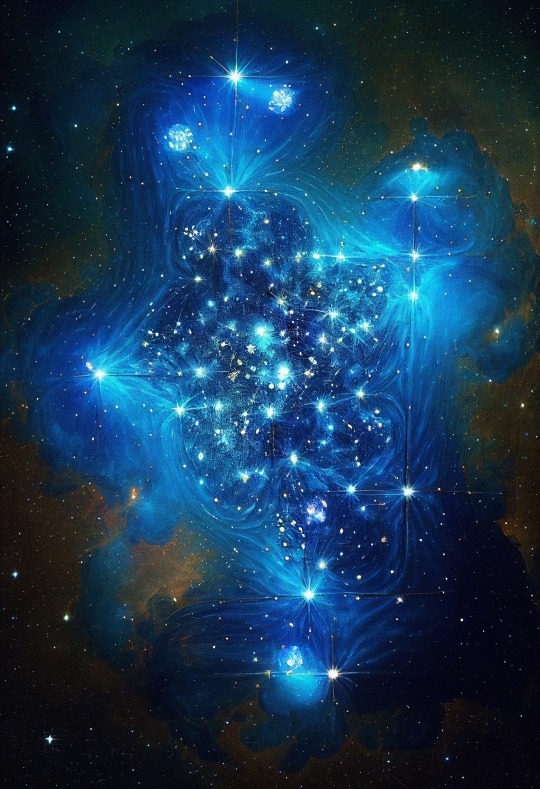

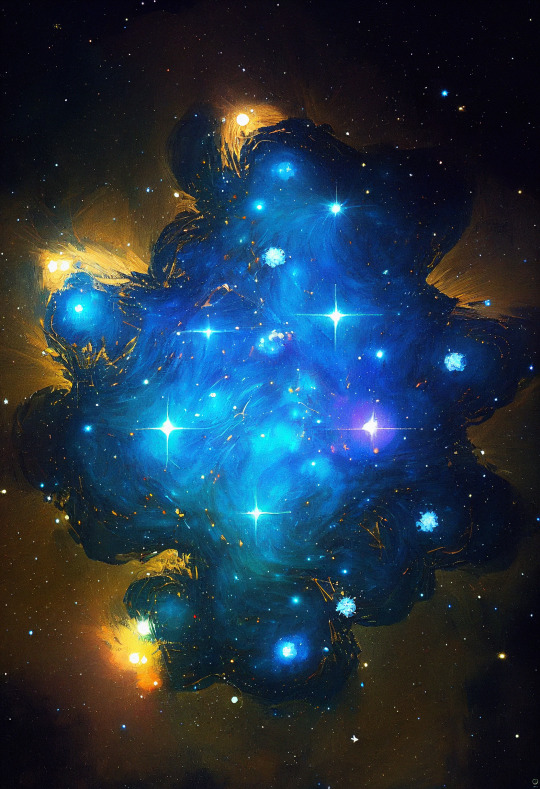
Seven Sisters In The Sky: Myth and Symbolism of Pleiades
Mythology and Symbolism The Seven Sisters, are beautifully located in the constellation Taurus and they are special for many reasons:
Myth Behind Pleiades In Greek mythology, the Pleiades were the seven daughters of the sea-nymph Pleione and Atlas -a Titan who was punished by Zeus to hold up the sky on his shoulders for eternity. Their names were Maia, Electra, Taygete, Alcyone, Celaeno, Sterope, and Merope. Their name, Pleione means “Ladies of Plenty” from the Greek word pleiôn “plenty.”
According to the myth, they were pursued by Orion, the giant hunter, who was in love with them. To protect the sisters probably from getting raped, Zeus transformed them into stars and placed them in the night sky.
Another tale suggests that the Pleiades were the companions of Artemis, the goddess of the hunt, who transformed them into stars to protect them from the advances of Orion, a giant hunter.
Whatever the myth is, the story of the Pleiades constellation is strong a metaphor for the power of sisterhood and the strength that comes from sticking together. Because of its feminine sisterhood energy, the 7 sisters constellation has been associated with fertility and abundance and is often seen as a symbol of prosperity and good luck.
Visibility The Pleiades are one of the most easily visible star clusters in the night sky. They can be seen with the naked eye from almost anywhere on Earth and have been observed and recorded by many different cultures throughout history.
The Pleiades are a relatively young cluster, estimated to be only around 100 million years old and contain over a thousand stars. They are also made up of hot, bright, and massive stars that emit beautiful blue-white light.
The Pleiades have been associated with mythology and symbolism in many different cultures, including Greek, Japanese, and Native American. They are often seen as a symbol of fertility, and abundance. They are often associated with the planting and harvesting of crops, and their appearance in the sky is seen as a sign of prosperity and good fortune.
Daughters of Atlas are a symbol of sisterhood and feminine power. In Hinduism, the Pleiades are associated with the birth of the warrior goddess Durga. Finally, in some Native American cultures, they are seen as the spirits of ancestors who have passed on and are guiding the living through their journey.
In Christianity, this constellation does not hold any significant religious or spiritual meaning. However in Islam, these stars are known as Al-Thurayya and are mentioned in the Quran. They are often associated with guidance and protection, and are believed to have been a source of inspiration for Arabic poets throughout history. The Pleiades are also significant in Islamic astronomy, as they mark the beginning of the Arabic lunar calendar. In traditional Islamic culture, the sighting of the Pleiades after sunset is used to determine the start of the Islamic month of Ramadan.
Astrology In astrology, the Pleiades are considered a significant star cluster and are said to have a powerful influence on human destiny. They are associated with qualities such as intuition, creativity, and psychic ability, and are often used in horoscopes and astrological charts.
Astrologically, the arrival of the Pleiades in the night sky is often considered a sign of spring and has been used to mark the beginning of agricultural seasons.
Witchcraft In witchcraft and Wicca, the seven Pleiades are the source of divine inspiration and guidance. Many witches believe that the stars can bring them closer to the spirit world and help them tap into their own intuition and psychic abilities. Some also believe that the stars can be used for divination and prophecy, and they can help witches connect with their ancestors and spirit guides.
The Pleiades have been seen as a source of divine inspiration and mystical experience. Some spiritual traditions believe that the stars can bring people closer to the spirit world and help them tap into their own intuition and psychic abilities.
Pleiades by Talon Abraxas
31 notes
·
View notes
Text
Tl;Dr - Primbon is like a type of "Zodiac System" for the Javanese where we use nature, astrology etc as a tool for divination, cleansing, etc.
----
I want to ramble a little about Indonesia's old spirituality, mythicisms and beliefs!!
I'm not entirely religious but ever since I practice Tarot, I have this belief of souls and spirit guardians in divination, and the more I practice divination the more I feel rooted into our culture's old beliefs.
Anyway, this has nothing to do with that... kinda.
Here in Java, we have this old manuscript called Primbon Palintangan Palindon Pakedutan, it contained texts on physiognomy and astrology, as well as other subjects.
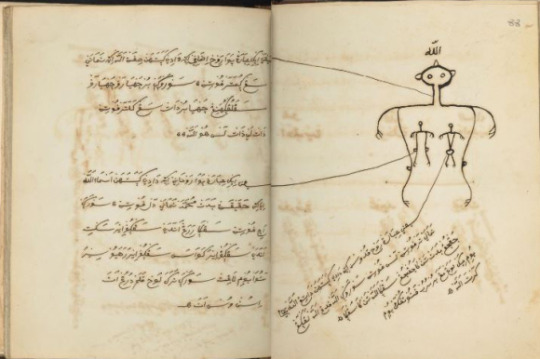
In this age, to believe in Primbon can be seen as Syirik and could lead to blasphemy.
According to KBBI, Primbon is defined as a Book consisting of forecast, knowledge of kejawen, occultism, a peculiar numeric system for calculating lucky days, prayers, selections from the Qur’an, instructions relating to ritual purity and performance of obligatory worship, texts on mysticism, astronomy, astrology, and every other important matter.
This book is mainly oriented towards the relationship between mankind and nature and is used as a life guide for Javanese people. Jogja also have their own Primbon called Bataljemur Adammakna!
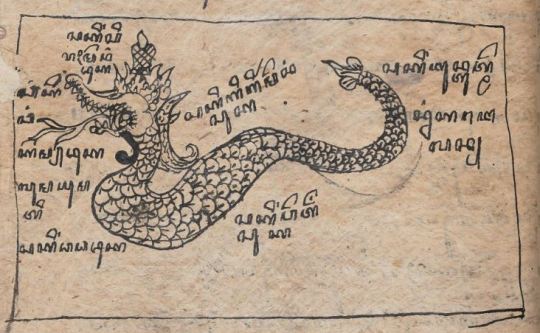
Primbon uses the Javanese calendar where every day, month, and year has its own calculation and is used to identify events that could occur in the future. It could be used as divination and a tool to hone vigilance.
There are eleven teachings;
Pranata reads the universe and petungan are the numbers that reads your fate
Pawukon calculates time and dates
Perobatan, where medicinal Primbon filled with prayers, spells and spiritual intentions are inscribed into a piece of paper and then burnt. Its ashes can then be rubbed on an affected area to heal.
Wirid are messages, suggestions, or prohibitions that are considered necessary to be followed for the sake of creating harmony
Aji-aji reflects the supernatural side of Javanese life. It is believed that extraordinary supernatural powers are contained in a spell if it is truly believed.
Kidung is a song and / or poetry that contains advice and such.
Ramalan means Divination, it is self explanatory...
Kawilujengan contains guidelines about the implementation of Javanese rituals for various purposes.
Donga is similar to Aji-aji but uses the verses from the Quran and spelled in Javanese
Finally, Ngalamat or sasmita is usually a strange phenomenon in the universe that is considered an oddity. The phenomenon is then interpreted as a sign of something.
Basically, Primbon is like zodiac systems and common astrology for us!!! Also the Brits took six volumes in 1812!!!!!! Give it back along with our legendary Keris!!!!!!! Please :(
27 notes
·
View notes
Text
Allah Created Gravity (The invisible pillars 13:2)
Al-Khazini (Abū al-Fath Abd al-Rahman Mansūr al-Khāzini (أبوالفتح عبدالرحمن منصور الخازنی) (Persian/ Iranian astronomer) during 1115–1130 writes in his book Kitāb mīzān al-hikmah very big details and explanations of gravity (i.e., al-thiqul) especially specific gravity and center of gravity among the many other subjects, one of them astronomy, of course.
He said, “ Gravity varies directly as the distance from the center of the world… ”.
Many years later this subject was again revived by Sir Isaac Newton.



#quran#islam#allahﷻ#muslim#creation of universe#universe#tumblog#tumblr#astronomy#gravity#gravitation
36 notes
·
View notes
Text

#pixelart#artist#art#james webb#illustration#pixel#space#galaxy#alien#muslim#allah#quran#nasa#astronomy#hubble
9 notes
·
View notes
Text
Islam, Astronomy & Arabic Print: Exhibition Highlight

One of the exhibition’s highlights is Historia Josephi patriarchae, ex Alcorano, Arabicè dated 1617. It’s a triple Latin translation of chapter Joseph (Surah Yusuf) from the Quran, translated by Dutch scholar Thomas Erpenius.
Joseph is mentioned in the Torah and Bible and is revered as a prophet in Islam as a descendant of Abraham. The chapter narrates the story of Joseph’s prophetic dream regarding eleven stars, the sun and the moon.
You can view the exhibition online here.
17 notes
·
View notes
Photo

The University of Timbuktu is a collective term for the teaching associated with three mosques in the city of Timbuktu in what is now Mali: the masjid of Sankore, Djinguereber, and Sidi Yahya. It was not a university in the modern sense, but a loosely organized scholastic community that endured for many centuries during the medieval period. The University of Timbuktu was unlike the modern university in that there was no central organization or formal course of study. There were several independent schools, each having a principal instructor. Students chose their teachers, and instruction took place in mosque courtyards or private residences. The primary focus was on the study of the Quran and Islamic subjects, but academic subjects were also taught such as "medicine and surgery, anatomy, botany, evolution, physiology and zoology, astronomy, anthropology, cartography, geodesy, geology, mathematics, physics, chemistry, philosophy, language and linguistics, geography, history, as well as art." Teachers associated with the Sankore mosque and the mosque itself were especially respected for learning. It boasted up to 25,000 students out of a total city population of 100,000. Timbuktu quickly grew in importance by the start of the 12th century, with a thriving economy based on trading salt, gold, spices, and dyes. As the wealth of the city grew, it also became a center of learning, attracting scholars and manuscripts. It acquired a reputation for learning and scholarship across the Muslim world. #africanhistory365 #africanexcellence https://www.instagram.com/p/CoR8dzSORKN/?igshid=NGJjMDIxMWI=
2 notes
·
View notes